Meet the 2022 Winners of the Manufacturing Leadership Awards

A group of world-class manufacturers and their leaders have been recognized for their achievements by the 2022 Manufacturing Leadership Awards.
About the awards: Presented by the Manufacturing Leadership Council, a division of the NAM, the awards recognize excellence in digital manufacturing. Since the program’s founding in 2005, more than 1,000 high-performing projects and individual leaders have been honored with an award. Winners represent companies of varying sizes in a wide array of industries.
This year’s awards were given in nine project categories and two individual categories. Some project categories include AI and Machine Learning, Digital Supply Chains and Digital Network Connectivity. Judging is done by a panel of industry experts, many of whom are past winners themselves.
Why it matters: The movement toward smart factories allows manufacturers to leverage data to become more efficient, productive, sustainable and competitive. In the difficult business conditions that many are experiencing, data-driven operations can mitigate disruptions and even predict them before they happen.
“This year’s winners are exemplary for their compelling use of technology, innovative approach to problem solving and overall commitment to furthering the progress of Manufacturing 4.0,” said Manufacturing Leadership Council Co-Founder, Vice President and Executive Director David R. Brousell.
Gala coming in June: Winners will be honored at the Manufacturing Leadership Awards Gala on Wednesday, June 29, 2022, at the JW Marriott Marco Island Beach Resort in Florida. The gala will also feature the announcement of this year’s Large Enterprise Manufacturer of the Year, Small/Medium Enterprise Manufacturer of the Year and Manufacturing Leader of the Year.
Select winners will present their projects at Rethink: The Manufacturing Leadership Council Summit, the industry’s premier event focused on Manufacturing 4.0.
See the complete list of winners here.
Nurturing the Next Generation of Manufacturers: Vermeer’s Child Care Center
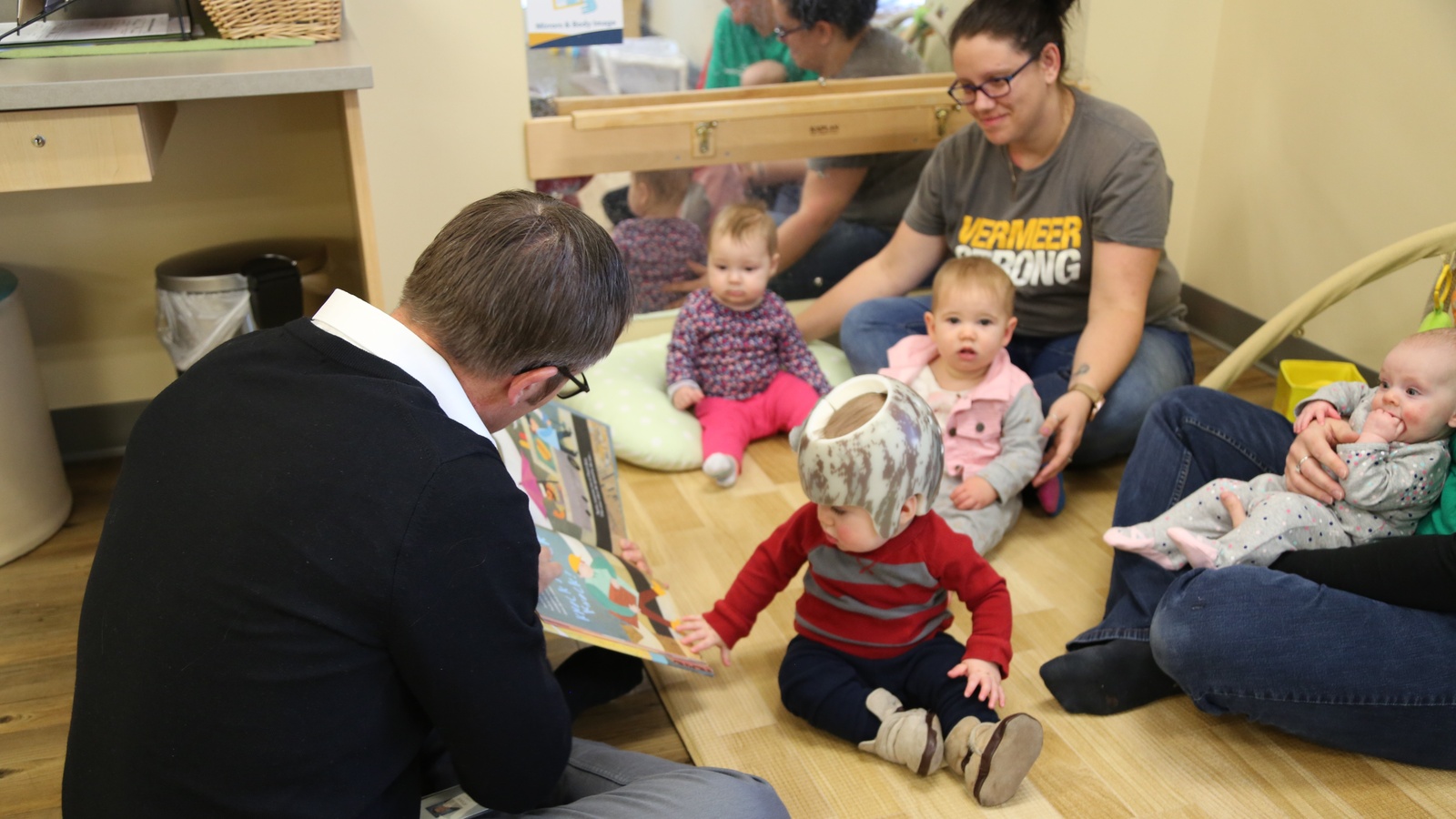
In 2012, Vermeer management realized it had been hearing the same refrain from team members for some time: There was a shortage of available, high-quality child care in the Pella, Iowa, area, and it was complicating parents’ work schedules.
Workers’ challenges are the company’s challenges: Rather than respond with a collective shrug, the company recognized there was a problem—and it vowed to find a solution.
- “Especially with early morning shifts, you heard a lot about people leaving their children at a neighbor because parents had to be at work before the bus came or school started,” Vice President of Operations Mindi Vanden Bosch, a third-generation Vermeer family member, recalled.
- “We put a task force together and brainstormed. Over the next year and a half, we built the Yellow Iron Academy, Vermeer’s early childhood education center. Every answer from employees since has been, ‘It’s been a game-changer.’”
Not just care, but education, too: The Yellow Iron Academy, which gets its name from the company’s yellow products, isn’t just a nod at child care. With day-to-day operations run by award-winning third-party child care services provider Bright Horizons, it is a full-fledged center led by qualified professionals, and it aims to ready children for academia—and eventually, careers.
- “We’ve had teachers say, ‘Wow, these Yellow Iron kids are coming in with a strong readiness to learn,” said Vermeer Vice President of Human Resources Kate Guess, whose own children attended the center. “Yellow Iron Academy is taking the first steps to encourage kids to consider STEM careers like those in manufacturing,” Guess said.
- During Engineering Week, Vermeer professionals come in and talk to the center’s older kids about their jobs as engineers. The kids take regular field trips “across the road” to Vermeer’s facilities to see its museum, equipment and Global Pavilion. “It’s a place where they get excited about all the disciplines of STEM,” Guess said.

Meeting a community’s need: The center, which remained open throughout the COVID-19 pandemic, has achieved its intended goal of providing parents with top-of-the-line supervision and education while alleviating worry about having to cobble together care solutions for the next shift.
- Yellow Iron Academy isn’t just for Vermeer kids, though. While Vermeer team members and others with a connection to the company (grandparents, for example) receive discounted care rates, the center “is for the whole community,” Vanden Bosch said. “There is a need for child care in the area and across the entire state.”
- Out of the approximately 130 kids at Yellow Iron Academy, about 75 have Vermeer connections, Guess added.
Filling in school gaps: One of the most appreciated aspects of Yellow Iron Academy is its offering of before and after care, or programs prior to and following the school day.
- The center opens at 5:30 a.m. and is a pick-up and drop-off point on local school bus routes, so Vermeer team members don’t have to worry about school transportation for their children.
Other Vermeer team member benefits: Vermeer offers its team members several other differentiated, highly sought-after benefits. These include an onsite health care clinic and pharmacy, where both doctor visits and prescriptions are more cost effective than they are elsewhere, and a chaplaincy program.
- Both team members and their dependents are eligible to use the clinic and the pharmacy (features Vermeer has offered for 25 years) and many do.
- Vermeer has multiple chaplains across the company’s locations. These chaplains are available 24 hours a day, seven days a week to “support the emotional needs of the team,” Vanden Bosch said. “It is without question one of the things our team members most value.”
Child care advice for other manufacturers: “Child care is hard right now,” Vanden Bosch said. “Businesses have to go into it with the belief that it’s an investment in the workforce of today and tomorrow, knowing that there will likely be some costs they won’t recoup. But it’s one of the most viable ways to create a workforce.”
Manufacturers Lead with Their Hearts in Ukraine Aid

Manufacturers have been eager to help those affected by the humanitarian crisis in Ukraine, with many even lending a hand on the ground.
What manufacturers have been doing: They’ve raised millions of dollars through their own charities and funding vehicles, donated parts of their own profits, provided free legal support and phone calls to Ukraine, given medications and food, coordinated the shipping of relief supplies and more.
- Some manufacturers with operations in Ukraine have helped employees and their families flee the country and find temporary homes elsewhere in Europe.
Shared values: “Manufacturers have a proud history of standing firm in support of democracy, and we stand with the Ukrainian people,” NAM President and CEO Jay Timmons said recently, following the unanimous vote by the NAM Board of Directors to denounce Russia’s invasion of Ukraine.
Partnering to help: To help the people of Ukraine, the NAM’s Emergency Response Committee has partnered with Project HOPE and is engaging with other members who are donating through this and other channels.
- These efforts are providing channels for manufacturers to support efforts on the ground. For example, advanced materials manufacturer Greene Tweed recently donated $25,000 through the NAM–Project HOPE partnership.
- Project HOPE, an international health care and disaster relief organization, has emergency response teams in both Ukraine and neighboring countries that are giving health and humanitarian assistance to refugees and internally displaced persons.
- The ERC is a volunteer-led group that works to provide resources and information to manufacturing leaders before, during and after crises, both domestic and international. In addition to its partnership with Project HOPE, the ERC is also working with domestic partner Good360 on Ukraine relief.
The NAM says: “Manufacturers are truly at the forefront of aid efforts to Ukraine,” said NAM Senior Director of International Trade and Regulatory Affairs Ryan Ong. “Collectively, they’ve raised tens of millions of dollars for food, shelter, medicine, health care and more for the people of Ukraine. They’ve stepped up to help those in need, just as they do as a group in any time of crisis or hardship.”
Those wishing to donate to Project HOPE can do so here. To get more information about NAM efforts or share what your company is doing, contact the ERC at [email protected].
Bourla’s “Moonshot”: How Pfizer Innovated to Save Lives
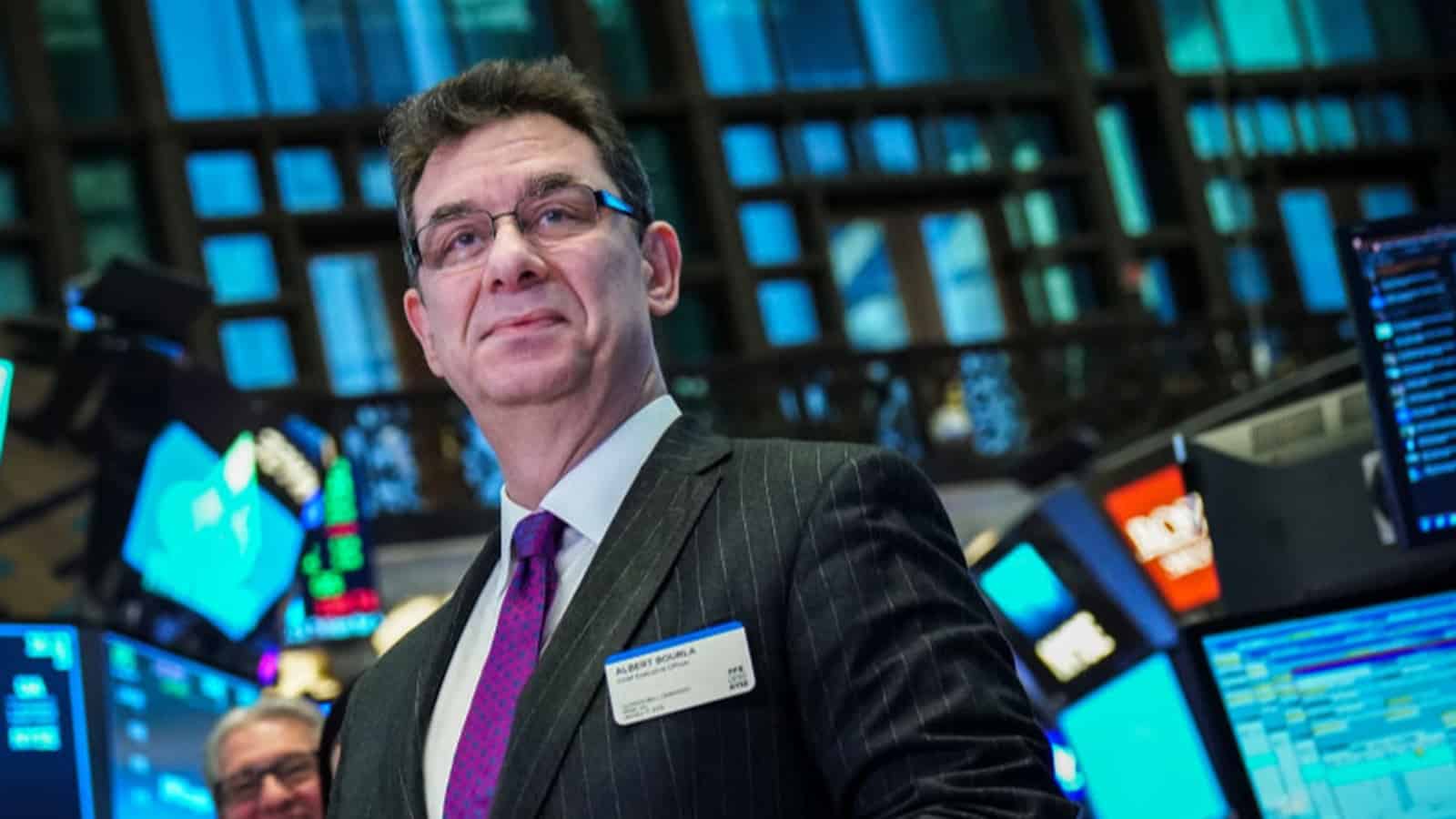
In just nine months in 2020, Pfizer pulled off a scientific feat few were betting on: It produced an effective vaccine against the COVID-19 virus, an illness that at the time was contributing to thousands of deaths a week in the U.S. alone.
A ray of hope: Pfizer Chairman and CEO Albert Bourla shares the astounding story in his new book, “Moonshot: Inside Pfizer’s Nine-Month Race to Make the Impossible Possible,” out today. Part best practices, part personal memoir, “Moonshot” is at its heart a story about a manufacturer on a mission: to be part of something larger than itself and help the world.
Here, we share some of the highlights.
Tremendous sacrifice: “Pearl River, New York … where we had research labs, was also a community hot spot for the virus,” Bourla writes on page 87. “More than 350 people a day came into the Pearl River site in the middle of the pandemic. They were diligent with precautions—masks, handwashing, social distancing, protective gear—but they were coming in for long hours and through weekends.”
- “It was a tremendous effort under challenging circumstances. During the pandemic, we saw thirty-four hundred Pfizer colleagues infected across the globe. Dozens were hospitalized. As of July 27, 2021, twenty-three colleagues and four contractors had lost their lives. When I would learn of grieving families and families in distress, I would personally call or email.”
Innovation under pressure: “I remember vividly when [now Executive Vice President, Chief Global Supply Officer Mike McDermott] came to a meeting to present how he would increase production to three billion doses in 2021,” Bourla writes on page 92. “One of the … challenges would be that if we needed to increase the production capacity dramatically, we would need many replicas of … new equipment, and we didn’t have enough readily available space in our manufacturing sites.
- “‘I will have to build new formulation sites,’ Mike said, ‘and as you know, building construction takes years.’ And before I could ask him, ‘What you are going to do about it?’ he anticipated my question.”
- “‘But we have a solution. … We can order prefabricated modules that we can install in our Kalamazoo manufacturing site within months, not years. … [I]t can be done.’”
Lifesaving cold storage: “Led by a man who became known as the Ice Man, James Jean, our engineers designed a temperature-controlled thermal shipper that could transport and store the vaccine anywhere in the world,” Bourla writes on page 94.
- “We had been piloting the idea before COVID-19, but when the pandemic struck, we skipped the test phase and went straight to full implementation. The shipper, about the size of a carry-on suitcase, weighed about seventy-five pounds. It carried a minimum of one tray of vaccine vials and as many as five trays. Each tray had 195 vials, 6 doses per vial. So, a single shipper could carry as many as 5,850 doses.”
“A Driver Rather Than a ‘Retirer’ of Employment”: Technology Supports Workers

Manufacturers largely agree that technology will help workers, not displace them, speakers said at the Manufacturing Leadership Council’s recent virtual event, “M2030 Visions of the Future: Reflections on New Orleans.”
New Orleans readout: The webinar, which featured a panel of technology experts, was a recap of highlights from the MLC’s December 2021 Manufacturing in 2030 project event in New Orleans, which hundreds of manufacturers attended.
What the future holds: The recent online discussion was primarily about future technological trends in manufacturing, and three major themes emerged: Completely “lights-out” manufacturing (i.e., totally automated) is not a likely near-term reality for manufacturing; upskilling and reskilling will be crucial in attaining syncopation between employees and robots; and most manufacturers have some ways to go to achieve digital maturity.
Lights out? Try lights dimmed: There is a misconception that robotics, artificial intelligence and machine learning will replace human employees on the shop floor. The reality is that they all do best together.
- “I view it more as a ‘dimmer switch’ than ‘lights out,’ and the level to which you can dim depends on the kind of manufacturing you do,” said West Monroe Senior Manager of Consumer and Industrial Practice Alex Jay. Particularly when it comes to “complex materials, [manufacturers will] need a nuanced touch,” which will require more, not less, human interaction.
- “There will be a dimmer switch, a natural limit to how far you would automate,” said Infor Senior Vice President of International Strategy Andrew Kinder. “In the next eight years, we will see more use of technology on the plant floor. Is this a concern for employment? I think the World Economic Forum put that to bed when they said … technology will create 12 million more jobs than it will ever destroy.”
- EY Principal of Strategy and Transactions Rosco Newsom agreed. “[Manufacturers] don’t see ‘lights out’ happening in the near future.”
Upskilling and reskilling: The increased use of Manufacturing 4.0 technologies on the shop floor will only increase the need for skilled talent, the panelists agreed.
- First, “there is reskilling and upskilling required even to make those ‘lights out’” changes, said NTT Data Senior Director of Manufacturing Industry Solutions Baskar Radhakrishnan.
- Complex materials that need nuanced touch and geometric dimensioning and tolerancing “will need more human interaction,” not less, Jay said.
Maturity not yet reached: As was evidenced by questions from the webinar audience and comments from manufacturers during the New Orleans event, many manufacturers could use guidance when it comes to using more technology.
- For smaller manufacturers wondering where to start implementing Manufacturing 4.0, look to “labor-intensive, repetitive tasks,” Radhakrishnan said. “That’s where you start.”
The last word: Robotics aren’t going to put anyone out of a job. As Kinder said, “Tech seems to be a driver rather than a ‘retirer’ of employment.”
Manufacturers Explore New Tech and Best Practices at MLC Master Class Series Events
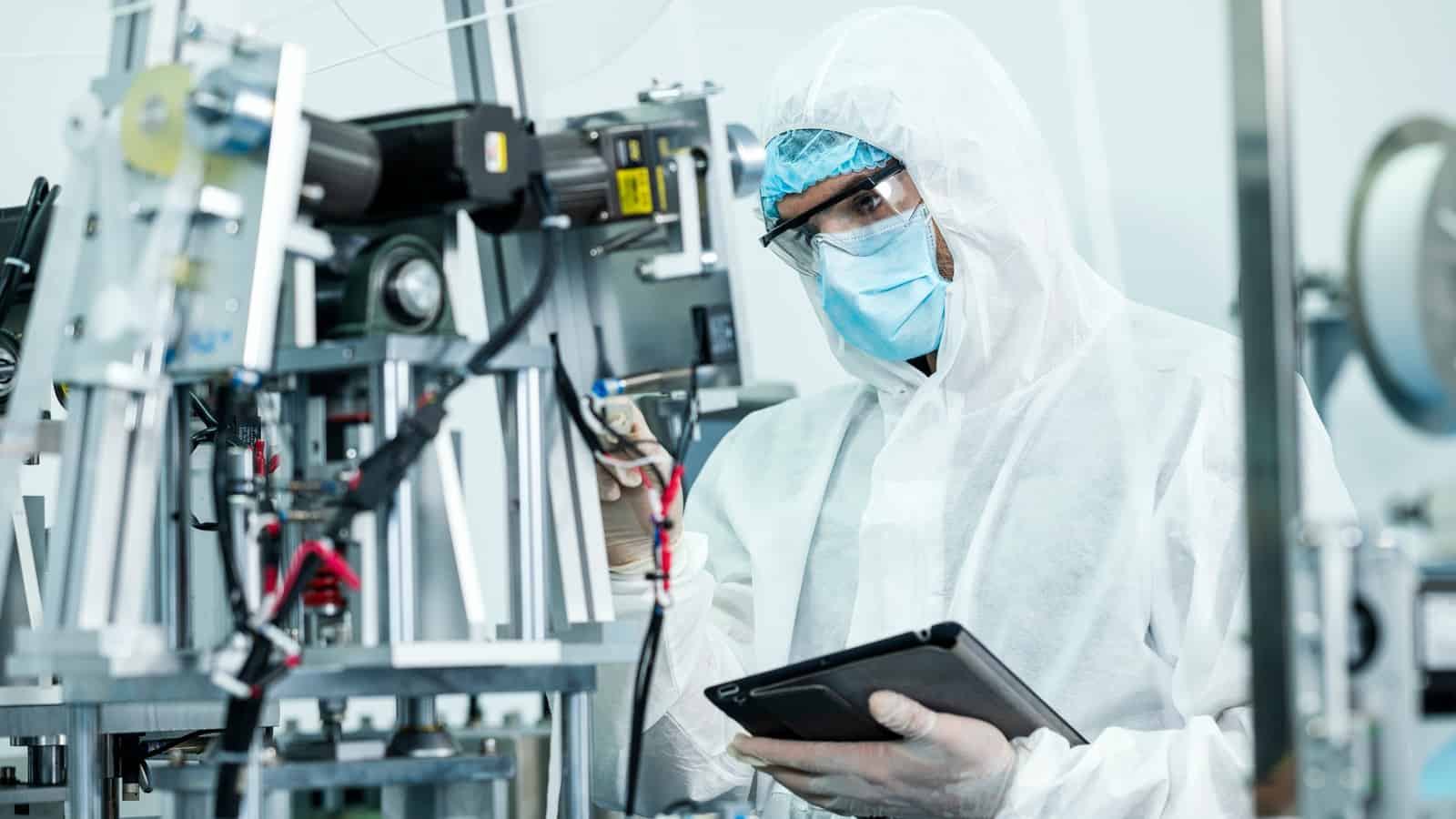
To help manufacturers navigate Manufacturing 4.0, the NAM’s Manufacturing Leadership Council launched the MLC Master Class Series. This series includes regular virtual events designed to explore new technologies, address pain points and showcase opportunities—all while connecting forward-thinking manufacturing leaders. Sessions in the series include interactive webinars, Technology Deep Dives and Tech Talks.
Webinars: With formats such as panel discussions, use cases and executive interviews, the Master Class webinars are especially beneficial to manufacturers who want to learn about the innovative technologies that have the potential to enhance their operations. These virtual sessions are a chance to hear directly from the digital manufacturing experts moving our industry forward. Content and discussions during these sessions provide insights on identifying, evaluating and implementing new technologies as well as providing strategies for leadership in the age of digital progress.
Deep dives: Deep dives are 60-minute interactive sessions that continue and expand the learning necessary to be successful with new technologies. They provide a more in-depth understanding of specific technologies, where they can be applied and how they can lead to new competitive advantages. Each deep dive also features short breakout sessions focused on either “How Do I Get Started?” or “How Do I Further Leverage?”
Tech talks: Tech talks are 30-minute candid conversations with subject-matter experts who provide insights into how specific technologies are designed to accelerate and drive the journey to Manufacturing 4.0. From purpose and adoption, to challenges with implementation and best practices on operations, MLC’s tech talks will enable you to stay abreast of new and evolving manufacturing technologies within the marketplace.
Master Class events take place throughout the year. Manufacturers at all stages of digital transformation are invited to participate in the entire series or choose individual events based on their needs and interests. To see upcoming classes and access recordings of past sessions, click here.
How Manufacturers Can Navigate Supply Chain Challenges

As the global supply chain, worker shortage and wage inflation challenges many had hoped were transitory dig in their heels, manufacturers everywhere are wondering how best to get around them.
Panelists at “Successfully Navigating Current Supply Chain Disruptions,” a webinar hosted by the NAM’s Manufacturing Institute, Manufacturing Leadership Council and professional services firm PwC, sought to answer that question.
We rounded up the speakers’ top tips for manufacturers seeking to sustainably and profitably maneuver the several sizable hurdles they still face going into 2022.
- Break down siloes. Now that manufacturers are having to replace traditional supply chain models, changing their company operations to have staff work across siloes is more important than ever, said PwC Partner Debjit Banerjee.
- Expect disruption. If it taught us nothing else, COVID-19 conveyed the importance of being prepared for the unexpected. Going forward, manufacturers would do well to not just plan for the possibility of disruption, but to assume it will come. To that end, preplanned “differentiated customer service” and disruption drills should become the norm, Banerjee said.
- Advance your supply chain planning. Increasingly, Nexteer Automotive, a global maker of steering and driveline components, is focusing on advanced supply chain planning, programs that help predict shipments, supply and demand for smoother operations, said Nexteer Automotive Vice President of Global Manufacturing Operations Dennis Hoeg. With it, “decisions can be made smarter, earlier.”
- Automate. Manufacturers should consider automating repetitive “transaction” work and reserving their employees for analytical tasks that only humans can do, according to Hoeg.
- Balance agility and resilience. Before the pandemic, “we were working on a strategy that was based on agility,” said Rockwell Automation Chief Supply Chain Officer Ernest Nicolas Jr. “Through the pandemic … we had to reprioritize. We had to take a step back to balance agility and resilience.” Manufacturers that want a better agility-resilience balance can do so “through data, process and technology” enablement, according to Nicolas.
- “Relentlessly prioritize.” Nicolas so believes in this advice that he ended his presentation with it. “There’s so much going on right now; we want to be certain we manage our priorities,” he said. “So, there’s a lot we’re saying ‘not now’ to …. but it’s not a matter of ‘no.’ It’s a matter of, ‘We’ve got to get these things finished so we can lay the foundation’” in this new normal.
What Will Manufacturing Look Like in 2030?
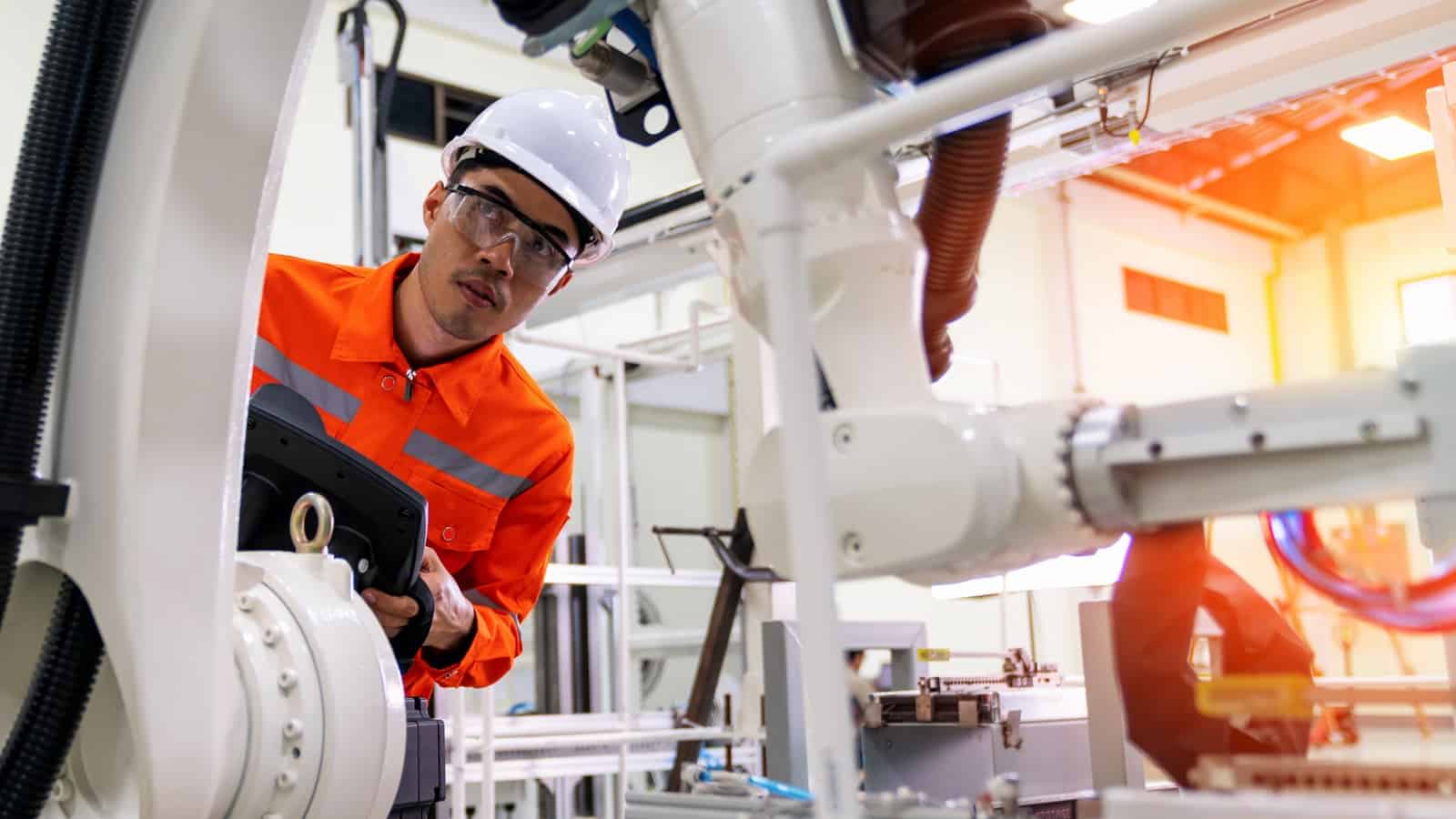
Given the many uncertainties brought about by COVID-19, supply chain disruptions, labor shortages and more, it might seem as though what happens in the coming decade is anyone’s guess. But on closer examination, there are signposts signaling some of what’s to come—and a closer look at them can help manufacturers plan for the coming years.
At the recent “Manufacturing in 2030: The Shape of Things to Come” event hosted by the NAM’s Manufacturing Leadership Council, in-person and virtual attendees heard from experts, examined trends, explored technologies and discussed upcoming challenges. The goal: to look into the future of manufacturing.
“We can’t be certain about what tomorrow will bring, let alone what might be in 2030,” said MLC Co-Founder David Brousell in his opening remarks. However, “we can project or extrapolate based on current trends and conditions, with a reasonable amount of probability, what the shape of manufacturing will look like in 10 years’ time.”
Why Manufacturing in 2030: Everything in manufacturing is changing, driven by technologies capable of giving decision makers more information than ever before. Prior to the pandemic, companies were already making changes to their organizational structures, shifting from hierarchical models to more collaborative means of organizing people and processes. COVID-19 has only accelerated this change.
Brousell explained: “All around us, conventional notions of what can be accomplished in production … are being reimagined.”
Challenges and opportunities: Upcoming challenges discussed included continued global supply chain disruptions, climate change and the redefinition of the human–machine relationship. Speakers examined the technological, organizational and leadership characteristics that can set manufacturers apart and provide them with a competitive advantage.
What’s next: The MLC will soon launch its yearlong “Manufacturing in 2030” project, which will help manufacturers explore, understand and plan for the future of the manufacturing industry in the next decade.
Said Brousell: “If we do things right in the next 10 years, we have the opportunity to create the greatest engine of manufacturing production humankind has ever seen.”
Vaccine Myth Buster: Nephron’s Michaela Almgren Gets to Work
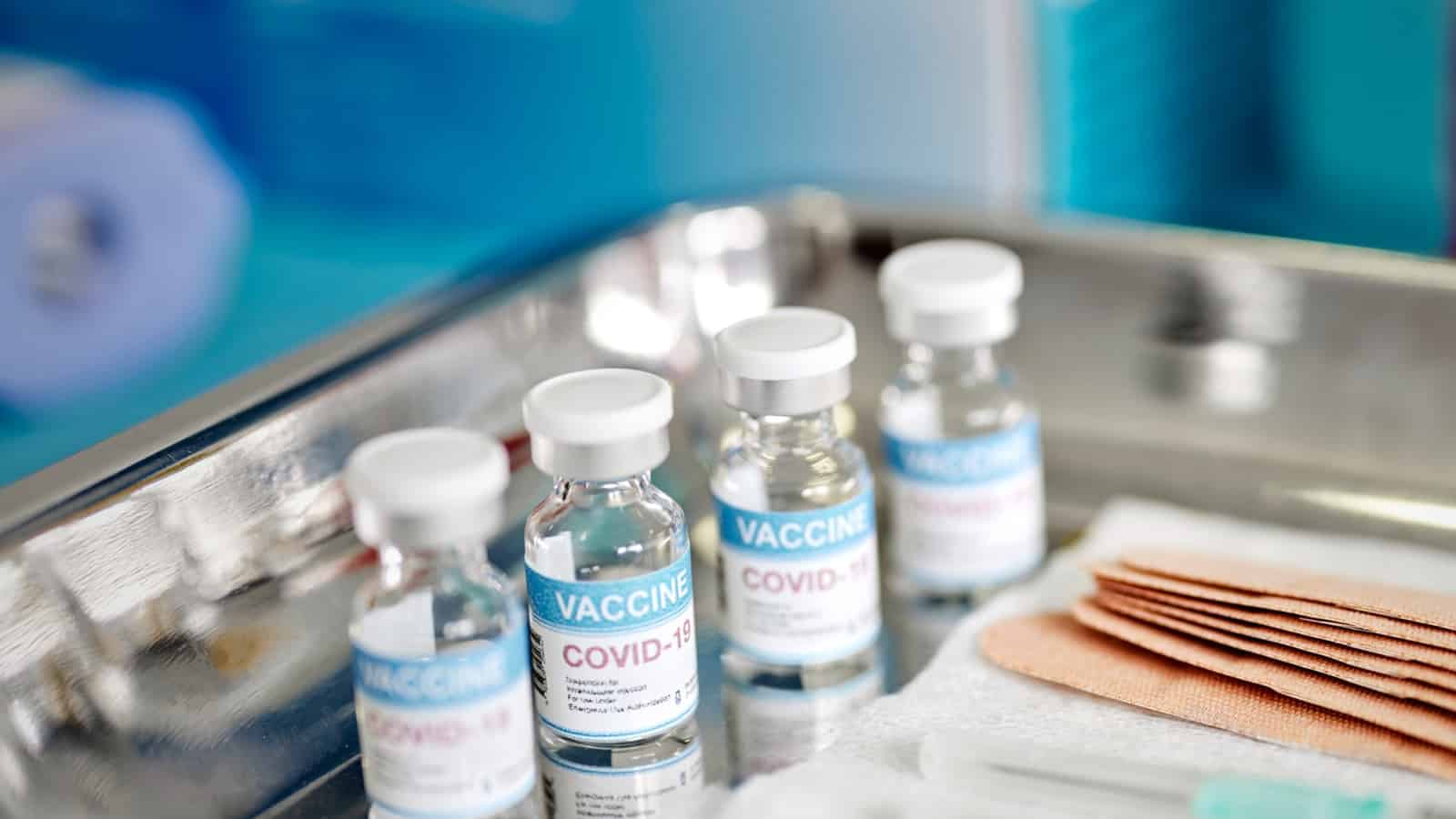
Michaela Almgren already has two jobs, but in recent months, she’s found herself appointed to a third: COVID-19-vaccine information hub.
A foot in each world: A pharmacist by training, Almgren divides her time between the University of South Carolina’s College of Pharmacy, where she is an assistant professor in the Department of Clinical Pharmacy and Outcomes Sciences, and Nephron Pharmaceuticals, where she is clinical adviser and pharmacy student internship director.
- Owing to her impressive background in drug formulation and analytical method development as a hospital pharmacist, as well as her skills as a lecturer, Almgren has also become a sort of de facto conspiracy-theory debunker when it comes to COVID-19 vaccination.
A go-to for facts: In recent months, in her capacity as both a professor and a Nephron employee, Almgren has given lectures and presentations about COVID-19, its variants and the vaccines—and she’s had significant follow-up questions from audience members. So many, in fact, that colleagues and others she has met teaching and at manufacturing gatherings have come to see her as a voice of reason capable of cutting through the noise.
- “A lot of people just fall into this misinformation mill” about the vaccine, Almgren said. “Typing in something like ‘Dangerous COVID-19 vaccine’ will give you this feed of articles, but it doesn’t mean the vaccine is dangerous.… That’s just how these [search engines] work.”
Convincing and calm: Almgren has been the impetus for the vaccination of several employees at Nephron, which has a 100% vaccination rate.
- “They’d say, ‘Thank you for talking with me. I was unsure about the vaccine, and it made me nervous, but talking with you made me feel that it was OK.’”
Fact vs. fiction: Almgren shared some of the top vaccine-related myths she’s successfully debunked during presentations and other conversations.
- “They have long-term side effects.” Fact: “This is where I talk about how these [vaccine] components don’t stay in your body more than 72 hours. The idea is just to elicit an immune response, and then it’s gone. And think about it on a global scale. If it was so deadly and terrible, by now we would see millions of people dropping dead or getting really sick” as a direct result.
- “They were rushed to market.” Fact: “When you actually look at how the clinical trial was defined, it was very similar to any other clinical trials for other vaccines. No shortcuts were taken. They just compressed the studies and ran them simultaneously.”
- “They’re not safe for kids.” Fact: “As a parent, I can totally understand why people would be concerned” about the vaccine for children, Almgren said. “But the clinical trial is out there, released and published in terms of how Pfizer did it. The data is clear showing the efficacy is there, and the side effects are minimal. If you have no issue with the polio vaccine or the tetanus shot, why is COVID-19 any different?”
- “Natural immunity is better.” Fact: “Natural immunity can be further boosted with the vaccine, and it wanes more than vaccine-induced immunity,” Almgren said. People who have had COVID-19 and get vaccinated “have an even stronger [immune] response.”
The last word: Check out the NAM and The Manufacturing Institute’s This Is Our Shot initiative to find out how you can protect yourself and the people you care about from COVID-19.
“What’s Ahead for 2022?” Predicts Growth, Continued Challenges
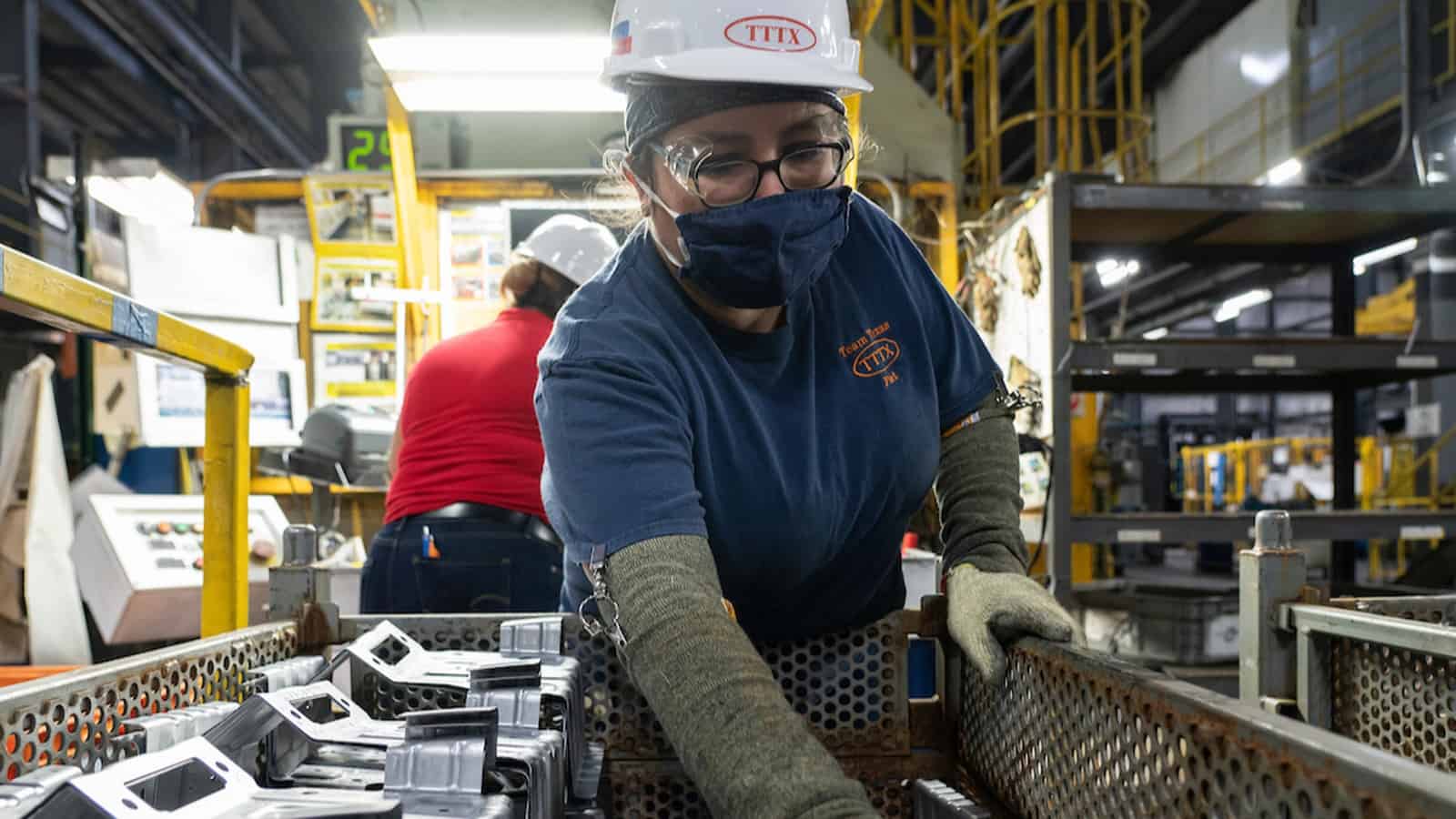
Remote work, digital twins, an increased focus on sustainability and continued talent shortages: these are just some of the trends affecting manufacturers that we’re likely to see in 2022 and beyond, according to a group of expert panelists on the recent Manufacturing Leadership Council’s “What’s Ahead in 2022?” Critical Issues Panel. The NAM’s MLC is a global business leadership network dedicated helping to senior executives leverage digital transformation in the manufacturing industry.
We rounded up some of the top predictions as they pertain to manufacturers.
Economy
- Manufacturing production will continue to be strong, said panelist and NAM Chief Economist Chad Moutray. Toward the end of 2021, it was 2% above February 2020, “a sign that we’re continuing to move in the right direction despite … continuing supply chain challenges.”
- S. labor-force participation is not likely to return “where it was pre-pandemic,” Moutray said. “A fair share of that is coming from retirement … [and] some people who are continuing to worry about child care and schooling.”
- The economy will grow about 4% in 2022, Moutray predicted.
Policy
- Washington will make moves to ease supply chain problems. “Congress knows they must do something to unleash the bottlenecks,” said panelist and NAM Senior Vice President of Policy and Government Relations Aric Newhouse. Legislation could involve workforce-participation incentivization in the form of training programs, as well as giving additional resources to ports.
- The vaccination and testing Emergency Temporary Standard will be “an area for continued movement” in 2022, Newhouse said.
Technology
- Technology will find ways to cope with what are likely to be ongoing workforce shortages, IDC Energy and Manufacturing Insights Group Vice President Kevin Prouty said. These will include automation and technologies to enable virtual and remote work.
- More manufacturers will begin using vision analytics, Prouty said, owing to the increased affordability of cameras and the ease with which footage can be analyzed, shared and moved in the cloud.
- Use of artificial intelligence will start to become the norm among manufacturers rather than the exception, panelist and MLC Content Director Penelope Brown said. “We’re seeing manufacturers move away from that research phase and much more toward a roadmap” for how they’re going to use AI in their plants.
Environment
- There will be greater, more widespread movement toward sustainability. In a recent MLC survey of manufacturers, 87% said they believed manufacturing had a responsibility to society to be more sustainable, Brown said.
Dive in deeper with the MLC’s recently redesigned website, and ensure your team has access to the MLC’s full network and suite of intel, events and other resources.
